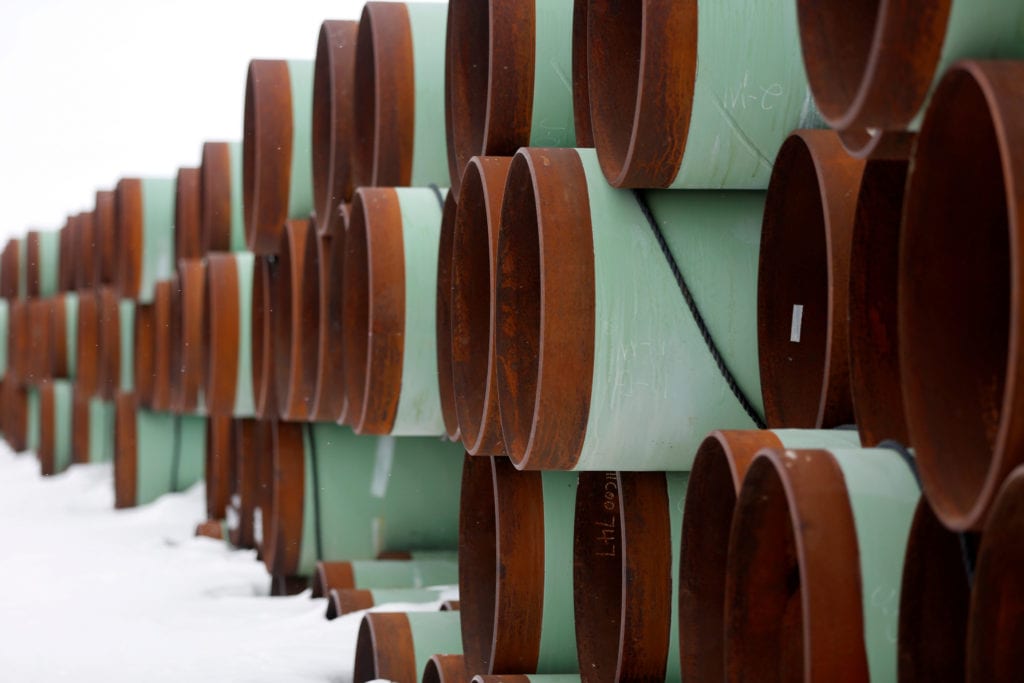- The Trump administration on Wednesday approved a right-of-way allowing the Keystone XL oil sands pipeline to be built across U.S. land, pushing the controversial $8 billion project closer to construction amidst court challenges.
- The approval signed by Interior Secretary David Bernhardt and obtained by The Associated Press covers 46 miles (74 kilometers) of the pipeline’s route across land in Montana that is controlled by the Bureau of Land Management and the U.S. Army Corps of Engineers, said Casey Hammond, assistant secretary of the Interior Department.
- Those segments of federal land are a small fraction of the pipeline’s 1,200-mile (1,930-kilometer) route, but the right-of-way was crucial for a project that has obtained all the needed permits at the state and local levels.
The pipeline would transport up to 830,000 barrels (35 million gallons) of crude oil daily from western Canada to terminals on the U.S. Gulf Coast. First proposed in 2008, the pipeline has become emblematic of the tensions between economic development and curbing the fossil fuel emissions that are causing climate change. The Obama administration rejected it, but President Donald Trump revived it and has been a strong supporter.
The stretch approved Wednesday includes all federal land crossed by the line, Hammond said. Much of the rest of the route is across private land, for which TC Energy has been acquiring permissions to build on.
Environmentalists and Native American tribes along the pipeline route say burning the tar sands oil will make climate change worse and that the pipeline could break and spill oil into waterways like Montana’s Missouri River. They have filed numerous lawsuits.
Additional approvals from the Army Corps of Engineers are needed for the pipeline’s impact to Montana’s Fort Peck dam. Two utilities must approve power lines that would connect to the project’s pumping stations.
TC Energy intends next month to begin mobilizing construction machinery to areas for worker camps and pipeline storage yards in Montana, South Dakota, and Nebraska, according to its court filings. It also plans to start toppling trees along the route in parts of South Dakota.


